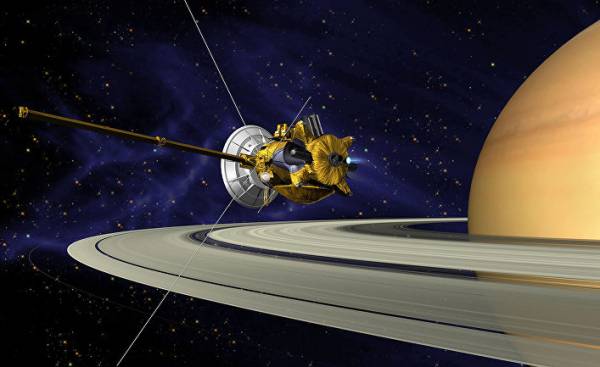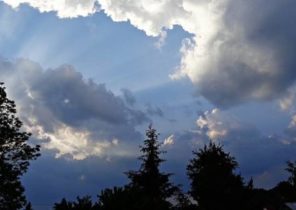
The distance between the surface of the gas giant planet Saturn and its primary ring is just over 2 000 km Soon, the NASA probe Cassini through this narrow slit go on an extended suicide mission.
It has been 19 years since it launched, and as much as 12 years and 9 months from the moment he started circling around, probably the most beautiful planet in the Solar system — Saturn.
But now NASA space probe “Cassini” has to commit suicide — very slow. And he did it very effectively.
On 26 April the spacecraft will react to a command from the Earth, including its rocket engines and bravely dives to the gas giant.
He comes so close to the gas surface of Saturn, that gets right to the center of the period 2 000 km between earth and its inner ring, composed of dust and ice.
“No other comic has not crossed this unique space where we will soon try to penetrate,” said Deputy NASA administrator Thomas Zurbuchen (Thomas Zurbuchen) and added that it will be a journey of discovery.
Over the next four months he, according to the plan, 22% will dive down through the narrow “gap” until 15 September will not take, finally, the final course in the deadly cold and chemically active atmosphere of the planet.
This will end the most ambitious and exciting mission in the entire history of space research.
Saturn and its rings, with an impressive world. First, the planet itself is a gas giant, nearly 800 times bigger than the Earth, but “only” 100 times harder. Thus, its density is so small that if it was possible to drop in a vast ocean, he would swim.
Then it is a bold ring that extends more than 100 thousand kilometers in space, and which was discovered when the Italian astronomer Galileo Galilei in 1610 turned his simple telescope to the planet.
Around the giant move at least 62 moons and the largest of them, the orange-and-green Titan, is one of the most remarkable planets in the Solar system, many of the mysteries which the mission has helped to solve.
After the arrival of Cassini at Saturn in summer 2004, he separated a small lander “Huygens”, created in Europe. He rushed down through the dense atmosphere of Titan. A few hours later he landed on the surface of the striking orange of the landscape, the relief which resembled a beach, river and hills.
Titan is not the only moon in our Solar system that has atmosphere. He’s bigger than planet mercury and is the only celestial body other than Earth on the surface of which is liquid. But this liquid — “sea of petrol” very low temperature, a mixture of methane and ethane, when a huge moon raining from the sky also falls to something like gasoline.
No wonder that “Huygens” lasted only a few hours before died in the chemical soup in which it is impossible to exclude the existence of life due to the presence of large amounts of organic building blocks. But if there is life, it must be quite another nature than that which we know on Earth.
In subsequent years, the parent apparatus “Cassini” flew around Saturn on a highly varying orbits and gathered a lot of data, including the seasons and superstorm. He saw from the surface quite modest ice-covered moon Enceladus from the similarity of the geysers erupt with jets of water vapor and ice.
And, first, he made some of the most exciting images of all that ever was done in the Solar system. Among them is a photo that was taken when the Sun was behind Saturn and its amazing rings.
Under the rings in empty space you can see the weak blue star. It’s not just a star. This is the home of the Cassini — Earth at a distance of 1.4 billion kilometers.
Cassini will never return to the place whence it was sent almost 20 years ago.
Instead, in the last months of his life he will do what NASA describes as “a completely new mission of” educational travel on an orbit closer to Saturn, “to maximize the scientific results.” Because never before no one camera didn’t get that close to the gas giant and its rings of ice and dust.
The last great head of one of the most daring missions of mankind will soon be finished.







